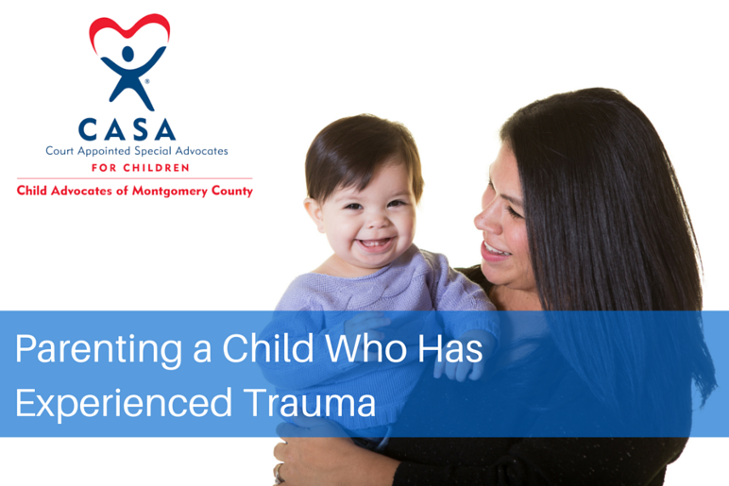Parenting a Child Who Has Experienced Trauma

Understanding the repercussions that abuse and/or neglect has on a child can seem overwhelming. The child has been exposed to a form of trauma that no child should have to experience. Foster parents, adoptive parents or other caregivers may misunderstand the child’s behavior and make ineffective or possibly harmful attempts to correct the behavior. Armed with an understanding of trauma, you can aid in the child’s healing, enhance the parent-child relationship, and make a positive contribution to the child’s long-term health.
What is trauma? Defined simply, trauma is “suffering an intense incidence that threatens or causes harm”. Trauma is the emotional response to that event and can change the way the brain perceives and responds to the world. In some cases, the trauma is a result of repeated instances and not a single occurrence.
“When your child is behaving in a way that is unexpected and seems irrational or extreme, he or she may be experiencing a trauma trigger. A trigger is some aspect of a traumatic event that occurs in a completely different situation but reminds the child of the original event. Examples may be sounds, smells, feelings, places, postures, tones of voice, or even emotions.” Child Welfare Information Giveaway. This resource also has a table of symptoms listed by age that is good information if you feel you are struggling to interpret a child’s feelings.
Coping with a traumatized child can be a challenge. But it is possible. The first step in this journey might be to identify the trauma triggers and try to eliminate them. When faced with misbehavior, respond in an even tone, lowering your voice and not staring directly at the child. These are non-threatening behaviors that may help calm the child. Don’t take the behavior personally, but do avoid physical punishment. It is important to be available, to offer comfort when the child is upset, and teach him/her to deal with their feelings in a positive way. Remain consistent, respectful, and patient with the child – healing from trauma takes time.
Five dimensions for caregivers to help a child recover from trauma:
- Availability– teaching the child to trust
- Sensitivity– assisting him/her to manage feelings and behavior
- Acceptance– building the child’s self-esteem
- Cooperation– helping the child to feel effective
- Family Membership– helping the child to belong – let the child know you will keep him or her safe and that you are committed to his/her happiness and welfare
Other helpful therapies include relaxation training education, skills training, and clarification of responsibility/blame for the offender(s) behavior.
CASA Advocates
When a CASA Advocate accepts a child’s case, they actively work in the child’s best interest to help find a safe, permanent, and loving home. CASA volunteers research case records and speak to each person involved in a child’s life, including family members, teachers, doctors, lawyers, therapists and social workers. They monitor the progress of the child and family throughout the case and advocate for the child’s current and future needs in court, in school, and in agency meetings. Their independent evaluations allow the court to make better-informed decisions.
Because CASA volunteers serve on one case at a time, they truly get to know the child and can give each case the sustained, personal attention it deserves.
Want to help a child in need? Contact us today to learn more about what being a CASA is all about and how you can join our fight for abused and neglected children.
